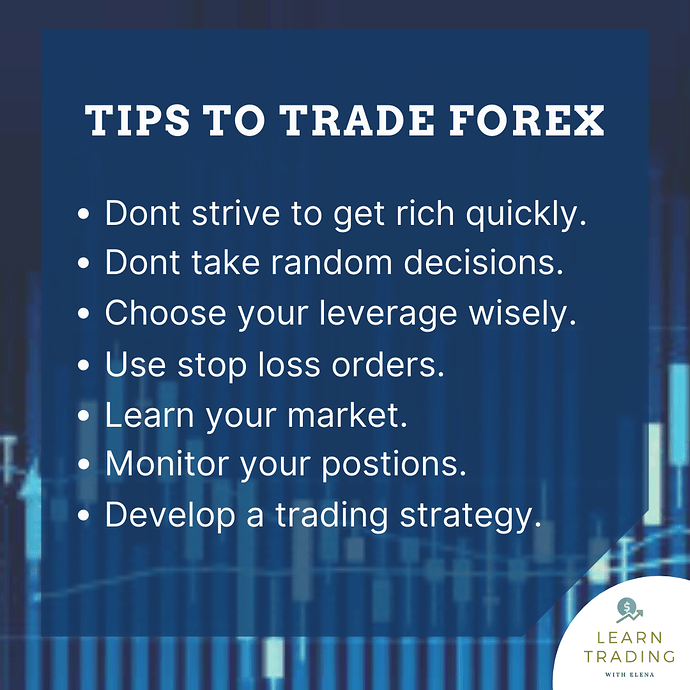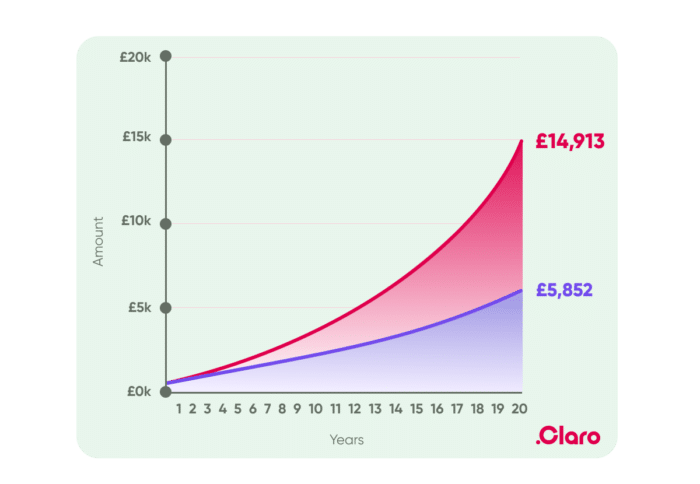
Here are some tips to help you get started trading forex. This article will discuss the importance of selecting a service provider, setting up trading plans, and using a demo account. This article will show you how to trade successfully. After reading this article, you should be able to understand the basics of Forex trading.
MetaTrader4 trading platform
There are many benefits to the MetaTrader 4 platform, including its automated trading capabilities. You can create and test bots before you buy them for your trading account. Trade robots are able to analyze prices and place trades according to predetermined algorithms. Expert Advisors (robots that automatically analyze price data and trade) can be downloaded for free from Code Base or purchased in the market. If you have the technical skills, you can make a robot using Raspberry Pi 3 (or Python). For automated trading, you can buy one from a freelancer.

Creating a trading plan
A trading plan is a guide that will help you get on the right track. The plan should describe your strategy, entry and exit criteria, as well as money management strategies. The document should reflect your trading style and personality, since every trader is different. It should include exit and trade entry criteria. Once you have completed your trading plan, you can modify it based on feedback from others. A trading plan that is constantly changing and adaptable is the best.
Using a demo account
You may be wondering why a demo account is better for forex trading. In a live account, you may lose money if you don't make a trade. Demo accounts allow you to use a trading platform to see if it is right for you before you move to the real thing. This allows you to test out the different features of your trading platform before making a decision about whether or not it is right for you.
You need to choose a service provider
You must consider your personal preferences and needs before you make a decision on a service provider. Many people pay close attention to the license of the company they want to work with. If the service provider is not licensed, it may mean that it was not found worthy by your local government. This could indicate that they are not worthy of your business. The number of software products it offers and its customer score are two other factors you should consider when choosing a provider. These factors will help you determine whether or not a service provider should be used for forex trading.
Use a watchlist to identify currency pairs you wish to trade
A watchlist is a handy tool that will help you get started in Forex trading. By selecting the currency pairs you want to trade, you can create a watchlist. Although there are no set rules for creating a watchlist of currency pairs, there are some characteristics that can help you get started in forex trading. We'll be discussing some of these qualities in this article. Let's get started!

Leverage
Forex trading requires leverage. This allows you to borrow money for a greater amount. While it does not show up in your trading account, it can be beneficial to you in terms of making profits. Although leverage is a great way of getting into the forex market quickly, it can also cause you to lose your mind. 100:1 is the safest rate of leverage to begin with. This is a low-risk investment and requires a price movement of 2% before your initial investment can be refunded.
FAQ
Is it possible to make passive income from home without starting a business?
Yes, it is. In fact, many of today's successful people started their own businesses. Many of them were entrepreneurs before they became celebrities.
You don't necessarily need a business to generate passive income. Instead, you can just create products and/or services that others will use.
Articles on subjects that you are interested in could be written, for instance. Or you could write books. You could even offer consulting services. The only requirement is that you must provide value to others.
Do I require an IRA or not?
A retirement account called an Individual Retirement Account (IRA), allows you to save taxes.
To help you build wealth faster, IRAs allow you to contribute after-tax dollars. They provide tax breaks for any money that is withdrawn later.
IRAs can be particularly helpful to those who are self employed or work for small firms.
Many employers also offer matching contributions for their employees. So if your employer offers a match, you'll save twice as much money!
How long does it take to become financially independent?
It depends upon many factors. Some people become financially independent overnight. Some people take years to achieve that goal. It doesn't matter how much time it takes, there will be a point when you can say, “I am financially secure.”
The key to achieving your goal is to continue working toward it every day.
What age should you begin investing?
The average person spends $2,000 per year on retirement savings. However, if you start saving early, you'll have enough money for a comfortable retirement. Start saving early to ensure you have enough cash when you retire.
Save as much as you can while working and continue to save after you quit.
The sooner you start, you will achieve your goals quicker.
Consider putting aside 10% from every bonus or paycheck when you start saving. You can also invest in employer-based plans such as 401(k).
Contribute at least enough to cover your expenses. After that, you will be able to increase your contribution.
Which investments should a beginner make?
Beginner investors should start by investing in themselves. They must learn how to properly manage their money. Learn how to save for retirement. How to budget. Learn how to research stocks. Learn how financial statements can be read. How to avoid frauds You will learn how to make smart decisions. Learn how to diversify. Learn how to protect against inflation. Learn how to live within their means. Learn how to invest wisely. Learn how to have fun while you do all of this. You will be amazed by what you can accomplish if you are in control of your finances.
Does it really make sense to invest in gold?
Since ancient times, gold has been around. It has remained valuable throughout history.
Like all commodities, the price of gold fluctuates over time. If the price increases, you will earn a profit. If the price drops, you will see a loss.
No matter whether you decide to buy gold or not, timing is everything.
Statistics
- They charge a small fee for portfolio management, generally around 0.25% of your account balance. (nerdwallet.com)
- 0.25% management fee $0 $500 Free career counseling plus loan discounts with a qualifying deposit Up to 1 year of free management with a qualifying deposit Get a $50 customer bonus when you fund your first taxable Investment Account (nerdwallet.com)
- As a general rule of thumb, you want to aim to invest a total of 10% to 15% of your income each year for retirement — your employer match counts toward that goal. (nerdwallet.com)
- Over time, the index has returned about 10 percent annually. (bankrate.com)
External Links
How To
How to invest in stocks
Investing has become a very popular way to make a living. It is also considered one the best ways of making passive income. There are many options available if you have the capital to start investing. There are many opportunities available. All you have to do is look where the best places to start looking and then follow those directions. The following article will explain how to get started in investing in stocks.
Stocks are shares that represent ownership of companies. There are two types. Common stocks and preferred stocks. While preferred stocks can be traded publicly, common stocks can only be traded privately. Shares of public companies trade on the stock exchange. They are priced according to current earnings, assets and future prospects. Investors buy stocks because they want to earn profits from them. This process is called speculation.
Three steps are required to buy stocks. First, decide whether to buy individual stocks or mutual funds. Second, you will need to decide which type of investment vehicle. Third, decide how much money to invest.
Choose Whether to Buy Individual Stocks or Mutual Funds
For those just starting out, mutual funds are a good option. These portfolios are professionally managed and contain multiple stocks. Consider how much risk your willingness to take when you invest your money in mutual fund investments. Certain mutual funds are more risky than others. If you are new to investments, you might want to keep your money in low-risk funds until you become familiar with the markets.
You should do your research about the companies you wish to invest in, if you prefer to do so individually. Before buying any stock, check if the price has increased recently. Do not buy stock at lower prices only to see its price rise.
Select Your Investment Vehicle
Once you've decided whether to go with individual stocks or mutual funds, you'll need to select an investment vehicle. An investment vehicle is simply another way to manage your money. You can put your money into a bank to receive monthly interest. You can also set up a brokerage account so that you can sell individual stocks.
Self-directed IRAs (Individual Retirement accounts) are also possible. This allows you to directly invest in stocks. The self-directed IRA is similar to 401ks except you have control over how much you contribute.
Your needs will determine the type of investment vehicle you choose. Are you looking to diversify or to focus on a handful of stocks? Do you want stability or growth potential in your portfolio? Are you comfortable managing your finances?
All investors should have access information about their accounts, according to the IRS. To learn more about this requirement, visit www.irs.gov/investor/pubs/instructionsforindividualinvestors/index.html#id235800.
Calculate How Much Money Should be Invested
Before you can start investing, you need to determine how much of your income will be allocated to investments. You have the option to set aside 5 percent of your total earnings or up to 100 percent. Depending on your goals, the amount you choose to set aside will vary.
It may not be a good idea to put too much money into investments if your goal is to save enough for retirement. If you plan to retire in five years, 50 percent of your income could be committed to investments.
It is important to remember that investment returns will be affected by the amount you put into investments. So, before deciding what percentage of your income to devote to investments, think carefully about your long-term financial plans.